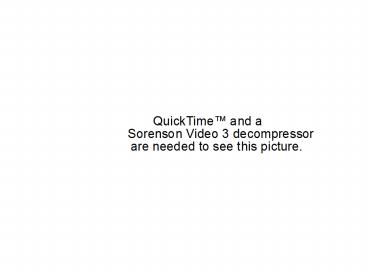Physics 2102 Spring 2002 Lecture 8 - PowerPoint PPT Presentation
1 / 13
Title:
Physics 2102 Spring 2002 Lecture 8
Description:
of the charge and to the magnitude of the charge: FB= q v x B ... Magnetic Force on Charge Perpendicular to B and v. q q. Definition of Magnetic Field ... – PowerPoint PPT presentation
Number of Views:15
Avg rating:3.0/5.0
Title: Physics 2102 Spring 2002 Lecture 8
1
(No Transcript)
2
How Do You Use Magnetic Fields in Your Everyday
Life!?
3
Lecture 18 FRI 26 FEB
Aurora Borealis
- Magnetic fields
- Ch.28.15
Ill be back.
4
Second Exam Review 6-7PM WED 04 MAR Nicholson
130 Second Exam (Chapters 2428) 67PM THU 05
MAR Lockett 6
5
Electric vs. Magnetic Fields
- Electric fields are created
- microscopically, by electric charges (fields) of
elementary particles (electrons, protons) - macroscopically,by adding the field of many
elementary charges of the same sign - Magnetic fields are created
- microscopically, by magnetic moments of
elementary particles (electrons, protons,
neutrons) - macroscopically, by
- adding many microscopic magnetic moments
(magnetic materials) or by - electric charges that move (electric currents)
6
Magnetic Field Direction
B
FROM North Poles TO South Poles
7
Ritchies Rule for Magnets
Opposite Poles Attract
Like Poles Repel
8
Magnetic vs. Electric Forces
We know that an electric fields exists because it
accelerates electric charges, with a force
independent of the velocity of the charge,
proportional to the electric charge FE qE We
know that a magnetic field exists because it
accelerates electric charges in a direction
perpendicular to the velocity of the charge,
with a magnitude proportional to the velocity of
the charge and to the magnitude of the charge
FB q v x B
Magnetic forces are perpendicular to both the
velocity of charges and to the magnetic field
(electric forces are parallel to the field).
Since magnetic forces are perpendicular to the
velocity, they do no work! (WF r)
Speed of particles moving in a magnetic field
remains constant in magnitude, ONLY the direction
changes. Kinetic energy is constant! (no work).
9
Magnetic vs. Electric Forces
Electric Force on Charge Parallel to E
q
Magnetic Force on Charge Perpendicular to B and
v.
q
10
Definition of Magnetic Field
Definition of Electric Field
Definition of Magnetic Field
11
Thompson Experiment
Forces Balance vE/B
12
L
13
(No Transcript)































